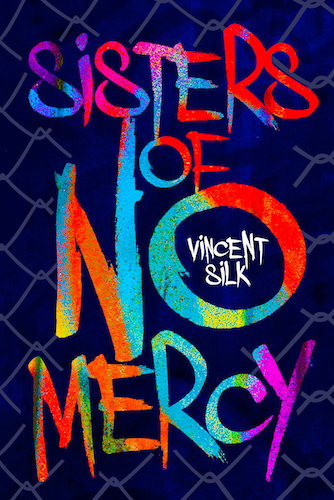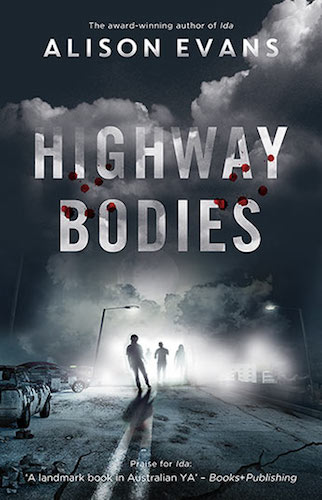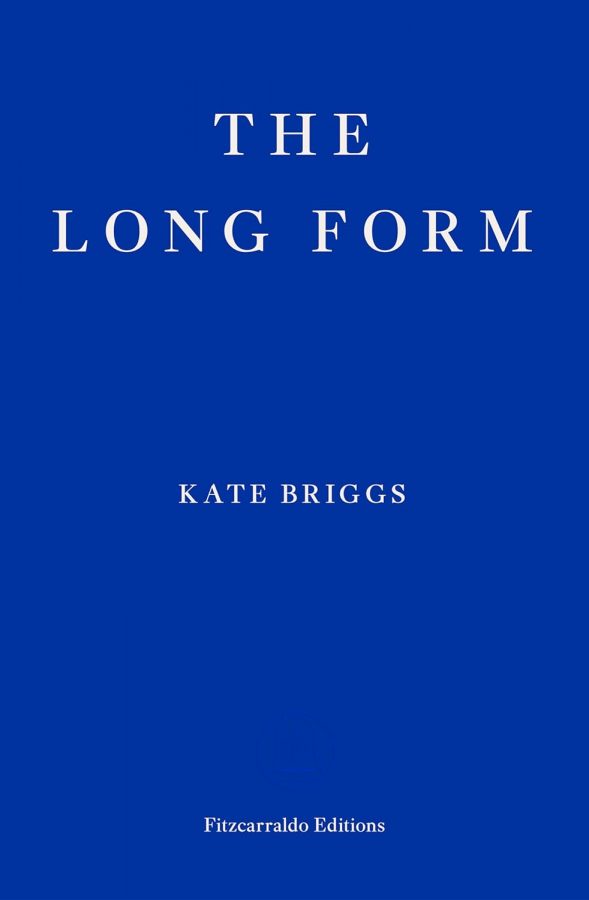It seems reasonable to believe — and I do believe — that the more clearly we can focus our attention on the wonders and realities of the universe about us the less taste we shall have for the destruction of our race. Wonder and humility are wholesome emotions, and they do not exist side by side with a lust for destruction — Rachel Carson.
The first ever real ‘direct action’ I properly participated in occurred at the front end of 2017 — a planned occupation of the streets and gates surrounding the Villawood Detention Centre. In order to apprehend or stall the deportation of a man whose brother had been given asylum without him, activists kept watch over every entrance 24/7. Many of us were inexperienced, idealistic. Once a decision has been made, all you can really do is protest.
Prior to the action my mind had been elsewhere. It was a summer of feverish activity and I was caught in my own self-centredness. A friend and I were putting on a gallery show in Adelaide. All our attention had been diverted by the demands of the project and the travel back and forth from Sydney. We strove to honour ideas of community that exist outside of the realm of commodity. The importance of fluctuating and communal ties, the dailiness of human connection; these were at the forefront of my thoughts. But it’s one thing to theorise your own microcosms, quite another when the chaos of the outside world whirls around it.
At Villawood the changes happened randomly. Our first overnight: we slept in bursts as old and new friends kept watch. I remember the feeling of insects crossing my feet and legs, and the persistence of nearby streetlights as they flickered and buzzed. Perhaps I’d been sheltered. I was unsettled to discover that a detention centre could exist so plainly in the suburbs. Violent processes were taking place just metres away from the neat houses in which families lived out their lives. More recently, there have been at least two suicides in that very centre. Deaths hidden in the fortress of wire, steel.
I’d clung to the fantasy that suburbia was a place of necessary solitude and non-violence, a kind of refuge against the chaos of the outside world and the workplace. As I lay curled into a sleeping bag on street corner that night in Villawood, the simulation began to glitch. My knowledge of the world was being quietly betrayed; the suburbs, I was discovering, had never been apolitical.
I grew up in Adelaide, a city that certainly encourages the idea of the suburbs as an oasis. The illusion of peace and order is suggested by the linearity of the streets, which were built for just that reason — but there’s a peculiar strangeness to the Adelaide suburbs that few have been able to articulate — though Jennifer Kent’s 2014 film The Babadook got pretty close. Paul Carter makes a prescient observation that applies to the planning of a city like Adelaide:
Empty spaces on the map, accountability and equally subdivided, should yield returns that could, more or less, be computed in advance. This attitude was not only capitalist and colonialist: it was also akin, of course, to the character of a nineteenth-century map….it could be divided up into blocks, the blocks numbered and the land auctioned, without the purchasers ever leaving their London offices.
Other writers have managed to bring these invisible patterns into closer view. In 1980, Dolores Hayden asked readers to imagine what a non-sexist city would be like. Rather than characterising cities in purely structural terms, Hayden contemplated the gendered ideology – and psychology – of urban design. On her analysis, urban routes and openings and buildings were constructed on the understanding that a woman belonged in the home. This was what guided urban designers and architects. The isolated, suburban family house prototype served a similar end: set up to confine and house power hierarchies. It was a retreat for the male breadwinner and it trapped the woman in the role of a homemaker and carer.
The suburbs don’t feel so comfortable when viewed through a non-normative lens. Literature that purveys a queer experience of the suburbs can aspire to portray both the aspirational sentiments of contemporary Australia and the reality of isolation and segregation for many suburbanites. It can explore the world through the eyes of a queer teen with disabilities, or an Indigenous kid dealing with condescending institutions, an immigrant woman trapped in domestic violence, a trans girl popping pills with back turned against the mirror, a character navigating the weight of poverty.
Vincent Silk’s new book, Sisters of No Mercy, a dystopian fiction set in the near future, can be painful to read because it refuses to resolve the conflict between aspiration and isolation. The characters hum with paranoia, unsure if their plans for insurrection can ever come to fruition. The denizens of Silk’s suburbs are armed only with steely focus and determination rooted in experience. This is how they must survive.
The story follows a band of mismatched but mostly compatible queers who, in the aftermath of Cyclone Martha, pool their skills to usurp a notorious property developer. There’s Pinky, Del, Almond, Neeah-Nancy and Jameson, all of whom have sharpened their lived practices into tactical class warfare. In this town — reminiscent of the plots of land and civilisation that define Sydney (and other towns in NSW) — and in this timeline, climate catastrophe ‘was firmly planted in the public consciousness’. Inner suburbia is a place of everyday injustice. Silk introduces his characters at seemingly inopportune times, and rarely gives them the honour of a definitive identity or clear backstory, if only because their needs are centred in the immediacy of their survival.
The ‘Sisters of No Mercy’ are a tribe of activists, anti-surveillance advocates, and organised conspirators who have learned to create underground railroads and pathways of resistance. They know how to break in to properties, to assume subtle disguises and to mask their difference, to turn commodities into cash and how to support each other in the heat of the moment. Climate change presents a series of palpable inconveniences and real dangers:
With winds that were actually cyclonic, the trees were fully in bloom. So there was more of this stuff in the air than usual. And you know who was most affected…It gets into the lungs and actually irritates the membranes so much that people can’t breathe.
This is a queer, post-apocalyptic heist novel – but Silk is not held in thrall to genre tropes. This is a novel that is also interested in domesticity, in how people feel housed and habituated, how they find refuge. For example, one of the many achievements of Sisters of No Mercy is to articulate the specific annoyance of being irregularly employed and housed with privileged, stalwart housemates who perform a superficial version of left stu-pol radicalism but cannot stand to wash their own dishes.
Anyway, she knew his ‘political’ decision to not work, and to spend his days sidling up to women at the Anarchist Library, was far less to do with his disillusionment with systems of oppression and much more to do with his hefty trust fund.
The character in question turns out to not be an inconsiderate flatmate, as we might assume, but the landlord.
Landlords aside, the citizens of Sisters of No Mercy have become accustomed to the kind of precarious living that defines microcosm queer communities in contemporary Sydney; juggling at least five different hustles, scraping the bottom of the barrel on the very best of days, taking every opportunity to make a ‘living’ but mostly just living week to week. The Sisters, the ‘clandestine network in operation’, are financed and managed through a careful combination of ‘thieving, smuggling, and other such pursuits, just like many ventures throughout the history of human engagement with rigid systems of rule’. This is an exaggerated version of the necessary ruthlessness I see in my own immediate queer communities.
Sisters of No Mercy is also a trans narrative, but it does not intellectualise the perpendicular types of lived experience in a way that the most visible trans narrative of recent years, Maggie Nelson’s The Argonauts, does. There are no references to Luce Iragaray or Judith Butler here. Gender and sexuality are zones of possibility defined by a plethora of relationship styles, by fluidities. As readers, we’re left in a continual state of unrest and ‘unsureness’ that is decidedly powerful. Silk repudiates the Tumblr-style neoliberal identitarian politics that force seemingly liberated people to quantify and share every micro-experience or micro-identity. The characters simply exist, and do, and think, and move, in a way that is relevant to them. Their positionality is informed by action, and the real life roles that are performed to sustain each other. When a quick and clandestine hook-up occurs between two characters, it is described with such specificity that it feels like staring into a bright light. It’s neither erotic or romantic, but rather opportune. Their positionalities are made urgent because of what is done to them, not just how they choose to define themselves. This makes Sisters of No Mercy both a fulfilling and necessarily unfulfilling read. It feels necessary, to me, to learn to accommodate that.
Highway Bodies by Alison Evans, a YA zombie novel, relies upon familiar YA narrative structures to freight quietly radical ideas to readers. Each chapter skips between varied groups of characters who are coming to terms with the world crumbling around them, whose lives are lived on empty and unreliable streetscapes. They have nothing left to lose, and are free to realise their sexuality or gender without social norms to police them or contain them.
In Evans’ world, emphasising one’s pronouns and agency remains just as important in a dying society. (Let’s celebrate that!) Characters narrate their experiences to the reader through diary entries. This has the advantage of keeping all their vocal quirks intact, and helps reveal the context and class of characters — and only occasionally slips into cliché. The story is full of cliffhangers — but Evans is kind to their characters and to their readers and doesn’t inflict undue suffering through suspense.
The familiar storyline that shapes Highway Bodies – lost teenagers trying to find meaning in an increasingly chaotic world – grows more and more relevant on a warming planet. I often think of the Lorde song ‘Buzzcut Season’ when I’m trying to make sense of a teenage life lived quietly and powerlessly on the edge of the world, never being free from the feeling of global responsibility and gradual worldwide collapse:
Explosions on TV, and all the girls with heads inside a dream
So now we live beside the pool, where everything is good…The men up on the news, they try to tell us all that we will lose
But it’s so easy in this blue, where everything is good
It’s easy to be fascinated by the politics of the apocalyptic when you’re distanced from its immediacy. Mark Fisher reflects in his 2012 essay, ‘What is hauntology’:
Troublingly, the disappearance of the future meant the deterioration of a whole mode of social imagination: the capacity to conceive of a world radically different from the one in which we currently live.
Perhaps it is simply easier to imagine things ending in a series of explosions and high-pitched screams then to invest our cognitive resources in dreaming up alternatives; or embracing the vulnerability that task requires.
Do I fear the climate apocalypse? Not when I think about how the effects of climate change and social collapse are already being deeply felt in the global south and remote and rural Australia. It’s a privilege to view changing ecosystems as an existential threat and not a material one. Climate insecurity is now beginning to frighten people who live in urban centres, yes — but many of us living in cities are familiar with insecurity. We know what that looks like and how it manifests, how it rises and when it quells. Dystopia or not, the working class queer narrative is, fundamentally, a survivalist one. We know how it feels to fear being outed and kicked out of home. We live with fear that our caretakers might rescind their love and abandon us to the wild. Like the characters in Sisters of No Mercy, we know how it feels to be stretched thin and to hustle for work, to scavenge, to feel the punitive hand of the state as it singles us out to be made examples of.
I can endure this injustice and still recognise that humans are not fundamentally cruel. Ultimately we live with an animal imperative to love and provide for others; to live in servitude to kin, to see them thrive; to be open-hearted, communal — even when neoliberalism encourages our most narcissistic selves out of hiding. I have seen how communities rally around our most vulnerable. We need to start remembering that we are the descendants of the first animals to bury their dead with flowers. As Arkady Martine writes:
Apocalyptic science fiction tells us so much about how the future is going to hurt—or could. But it can also explore how the future will be full of spontaneous helping; societies that bloom for a night, a few weeks, a month, to repair what has been broken. The human capacity to give aid and succor seems to be universal, and triggered quite specifically by the disruption and horror of disaster.
There is a growing body of Australian Indigenous writing on dystopia which presents new scripts about urbanism and the mythos of the land, about communality and survivalism, about settler amnesia. Evelyn Araluen writes:
The ghosts of the Western archive project themselves onto foreign soil and claim the terms of representation, including strategies of rendering Aboriginal presence as spectral and illusory – aesthetically haunting the settler home in favour of knocking on the door.
Hannah Donnelly has explored similar themes, noting that the so-called ‘harshness’ and unaccommodating depictions of the Australian outback, of regional spaces, is often predicated on assumptions about class, access and cultural knowledge that change rapidly depending on the subjectivity of a settler gaze.
Evans and Silk hold mirrors up to the white supremacy of the settler family structure, to technocratic sensibilities, and to the unreliability of comfortably ‘safe’ inner city sentiment. In order to find a place to feel protected, the protagonists in Highway Bodies move further and further out of the city. They seek the possibility of some kind of commune as the doldrums of a cosmopolitan Melbourne grid have failed them. These novels both depict the precarity of life in the outer suburbs. They make visible experiences unseen and unaccounted for by those who could provide them with support. In other words, both Sisters of No Mercy and Highway Bodies seek to speak honestly to this settler sensibility, even to write against it. This is important, but it can be troubling when considerations of indigeneity and settler personhood continue to be conveyed obliquely and through metaphor.
Too often the fall of Eurocentric, middle class stability is written as a destruction of the psyche, indeed of the entire world. Alternatives to the nuclear family model are presented as unfamiliar, monstrous and difficult to navigate. It needn’t be this way. When the families in Highway Bodies fall ill to a zombie sickness, the protagonists gravitate towards other queer people, who they sense will intuitively understand their needs, and a new type of family structure — or at least, express a support and unity that isn’t conditional. Meanwhile, the heterosexual characters they meet attempt to replicate heteronormativity and fail. They turn on each other, become cultish, violent and hierarchical. In the old world, this was what kept them in power — now, with money and patriarchy accidentally disassembled, it is their downfall.
Even in progressive circles there remains a critical illiteracy about the material conditions of trans people and of non-nuclear families. Speculative fictions like Sisters of No Mercy and Highway Bodies can help us to think in new ways about trans lives and families. As Brit Marling says, ‘If the muscle of our imagination is strong, we will become more capable of feeling for and empathising with what is considered ‘other’. Such fictions help challenge the encroachment of corporatism and neoliberal thinking in LGBTQ discourse; they expose the danger that the ‘comfort’ and power of the mainstream can separate us from our peers and histories. If we turn away from the mainstream, we face risk and vulnerability and precarity. Sisters of Mercy and Highway Bodies show that the infinitesimal choices of solidarity are ultimately life-saving: we can find meaning and security in the sharpened looks of our peers, in knowledge sharing and maneuvering and organising, and in self-belief.







